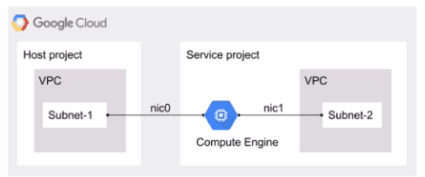Google Professional-Cloud-Network-Engineer - Google Cloud Certified - Professional Cloud Network Engineer
Total 233 questions
You are troubleshooting an application in your organization's Google Cloud network that is not functioning as expected. You suspect that packets are getting lost somewhere. The application sends packets intermittently at a low volume from a Compute Engine VM to a destination on your on-premises network through a pair of Cloud Interconnect VLAN attachments. You validated that the Cloud Next Generation Firewall (Cloud NGFW) rules do not have any deny statements blocking egress traffic, and you do not have any explicit allow rules. Following Google-recommended practices, you need to analyze the flow to see if packets are being sent correctly out of the VM to isolate the issue. What should you do?
You successfully provisioned a single Dedicated Interconnect. The physical connection is at a colocation facility closest to us-west2. Seventy-five percent of your workloads are in us-east4, and the remaining twenty-five percent of your workloads are in us-central1. All workloads have the same network traffic profile. You need to minimize data transfer costs when deploying VLAN attachments. What should you do?
Question:
Your organization has an on-premises data center. You need to provide connectivity from the on-premises data center to Google Cloud. Bandwidth must be at least 1 Gbps, and the traffic must not traverse the internet. What should you do?
Your company offers a popular gaming service. Your instances are deployed with private IP addresses, and external access is granted through a global load balancer. You believe you have identified a potential malicious actor, but aren't certain you have the correct client IP address. You want to identify this actor while minimizing disruption to your legitimate users.
What should you do?
Your company's security team tends to use managed services when possible. You need to build a dashboard to show the number of deny hits that occur against configured firewall rules without increasing operational overhead. What should you do?
You have the following Shared VPC design VPC Flow Logs is configured for Subnet-1 In the host VPC. You also want to monitor flow logs for Subnet-2. What should you do?

Question:
You are configuring the firewall endpoints as part of the Cloud Next Generation Firewall (Cloud NGFW) intrusion prevention service in Google Cloud. You have configured a threat prevention security profile, and you now need to create an endpoint for traffic inspection. What should you do?
Question:
Your organization is deploying a mission-critical application with components in different regions due to strict compliance requirements. There are latency issues between different applications that reside in us-central1 and us-east4. The application team suspects the Google Cloud network as the source of the excessive latency despite using the Premium Network Service Tier. You need to use Google-recommended practices with the least amount of effort to verify the inter-region latency by investigating network performance. What should you do?
You ate planning to use Terraform to deploy the Google Cloud infrastructure for your company, The design must meet the following requirements
• Each Google Cloud project must represent an Internal project that your team Will work on
• After an Internal project is finished, the infrastructure must be deleted
• Each Internal project must have Its own Google Cloud project owner to manage the Google Cloud resources.
• You have 10—100 projects deployed at a time
While you are writing the Terraform code, you need to ensure that the deployment is simple and the code is reusable With
centralized management What should you do?
(You need to migrate multiple PostgreSQL databases from your on-premises data center to Google Cloud. You want to significantly improve the performance of your databases while minimizing changes to your data schema and application code. You expect to exceed 150 TB of data per geographical region. You want to follow Google-recommended practices and minimize your operational costs. What should you do?)



